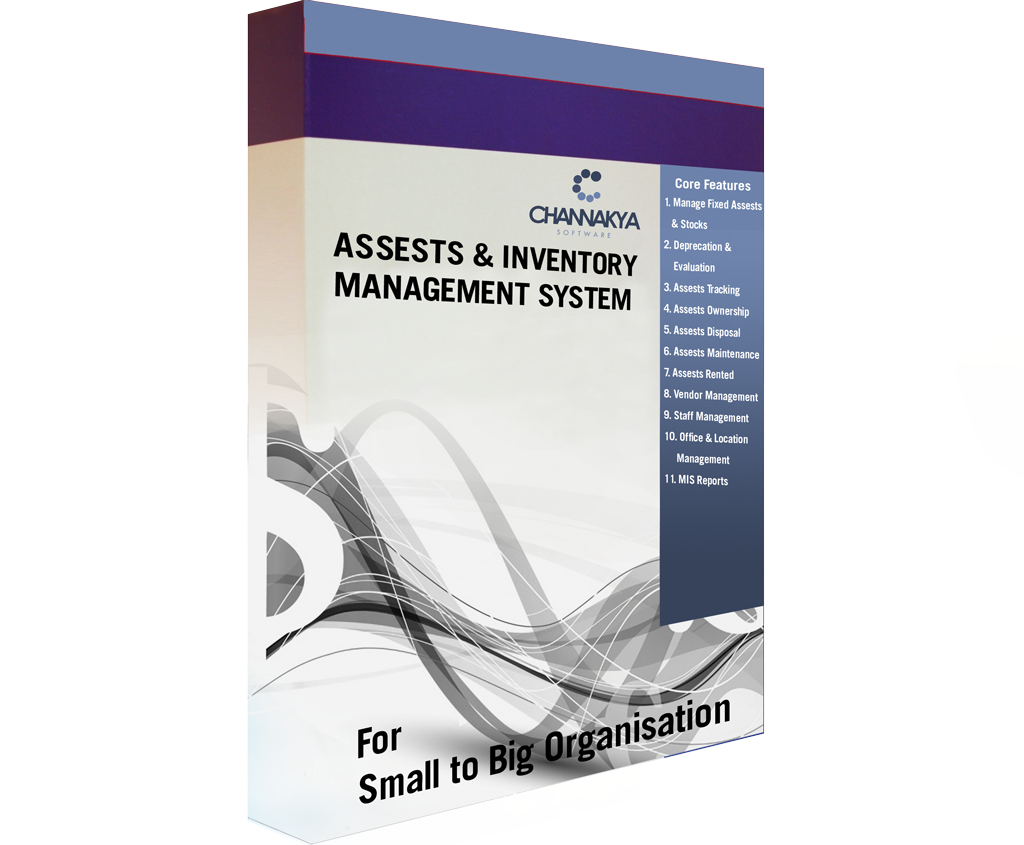ASSETS AND INVENTORY MANAGEMENT SYSTEM
Channakya’s Assets and inventory management system is a computer-based system for tracking inventory levels, orders, sales and deliveries. It can also be used in the manufacturing industry to create a work order, bill of materials and other production-related documents. Companies use inventory management software to avoid product overstock and outages. It is a tool for organizing inventory data that before was generally stored in hard-copy form or in spreadsheets.
Assets and inventory management system is made up of several key components, all working together to create a cohesive inventory for many organizations’ systems. These features include:
-
- Manage Fixed Assets and Stocks
Should inventory reach a specific threshold, a company’s inventory management system can be programmed to tell managers to reorder that product. This helps companies avoid running out of products or tying up too much capital in inventory.
-
- Asset Tracking
When a product is in a warehouse or store, it can be tracked via its barcode and/or other tracking criteria, such as serial number, lot number or revision number. Nowadays, inventory management software often utilizes barcode, radio-frequency identification (RFID), and/or wireless tracking technology.
-
- Asset Depreciation
Our software helps you to calculate asset depreciation over its life, book value and expenses. Use all methods of computing depreciation and/or create your own formula.
-
- Service Management
Companies that are primarily service-oriented rather than product-oriented can use inventory management software to track the cost of the materials they use to provide services, such as cleaning supplies. This way, they can attach prices to their services that reflect the total cost of performing them.
-
- Schedule Reporting
Channakya’s Assets and Inventory Management System will help you to create, schedule, run and share reports to fit your needs.
-
- Product Identification
Barcodes are often the means whereby data on products and orders is inputted into inventory management software. A barcode reader is used to read barcodes and look up information on the products they represent. Radio-frequency identification (RFID) tags and wireless methods of product identification are also growing in popularity.
Modern inventory software programs may use QR codes or NFC tags to identify inventory items and smartphones as scanners. This method provides an option for small businesses to track inventory using barcode scanning without a need to purchase expensive scanning hardware
-
- Inventory Optimization
A fully automated demand forecasting and inventory optimization system to attain key inventory optimization metrics such as:
-
- Reorder point: the number of units that should trigger a replenishment order
- Order quantity: the number of units that should be reordered, based on the reorder point, stock on hand and stock on order
- Lead demand: the number of units that will be sold during the lead time
- Stock cover: the number of days left before a stock out if no reorder is made
- Accuracy: the expected accuracy of the forecasts
There are several advantages to using inventory management software in a business setting.
-
- Cost savings
A company’s inventory represents one of its largest investments, along with its workforce and locations. Inventory management software helps companies cut expenses by minimizing the amount of unnecessary parts and products in storage. It also helps companies keep lost sales to a minimum by having enough stock on hand to meet demand.
-
- Increased efficiency
Assets and inventory management system often allows for automation of many inventory-related tasks. For example, software can automatically collect data, conduct calculations, and create records. This not only results in time savings, cost savings, but also increases business efficiency.
-
- Warehouse organization
Assets and inventory management system can help distributors, wholesalers, manufacturers and retailers optimize their warehouses. If certain products are often sold together or are more popular than others, those products can be grouped together or placed near the delivery area to speed up the process of picking. By 2018, 66% of warehouses “are poised to undergo a seismic shift, moving from still prevalent pen and paper processes to automated and mechanized inventory solutions. With these new automated processes, cycle counts will be performed more often and with less effort, increasing inventory visibility, and leading to more accurate fulfillment, fewer out of stock situations and fewer lost sales. More confidence in inventory accuracy will lead to a new focus on optimizing mix, expanding a selection and accelerating inventory turns.
-
- Updated data
Up-to-date, real-time data on inventory conditions and levels is another advantage inventory management software gives companies. Company executives can usually access the software through a mobile device, laptop or PC to check current inventory numbers. This automatic updating of inventory records allows businesses to make informed decisions.
-
- Insight into trends
Tracking where products are stocked, which suppliers they come from, and the length of time they are stored is made possible with inventory management software. By analyzing such data, companies can control inventory levels and maximize the use of warehouse space. Furthermore, firms are more prepared for the demands and supplies of the market, especially during special circumstances such as a peak season on a particular month. Through the reports generated by the inventory management software, firms are also able to gather important data that may be put in a model for it to be analyzed.

